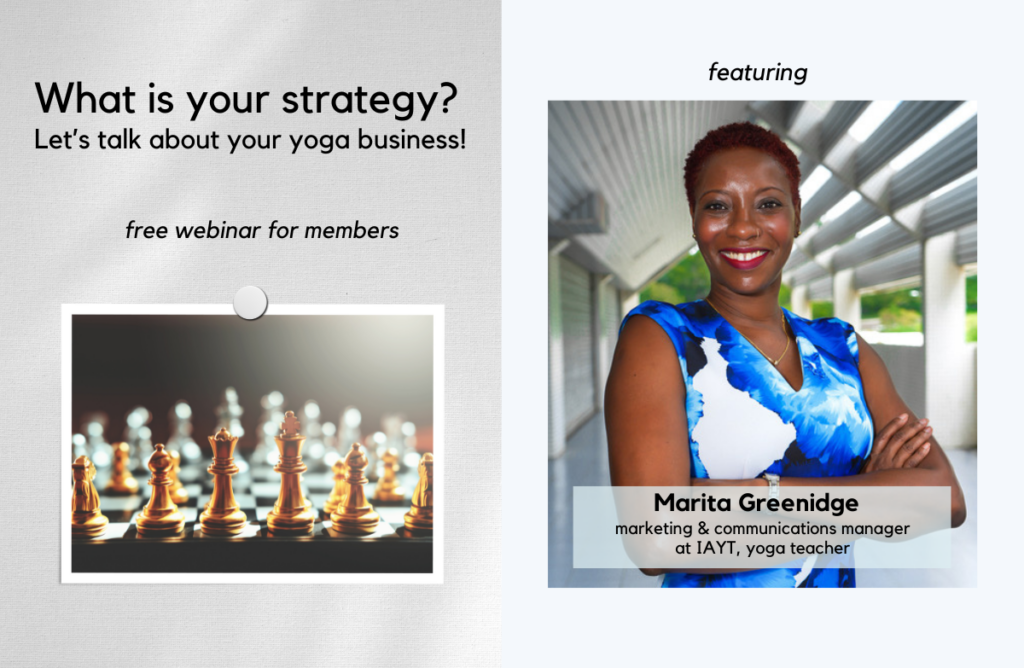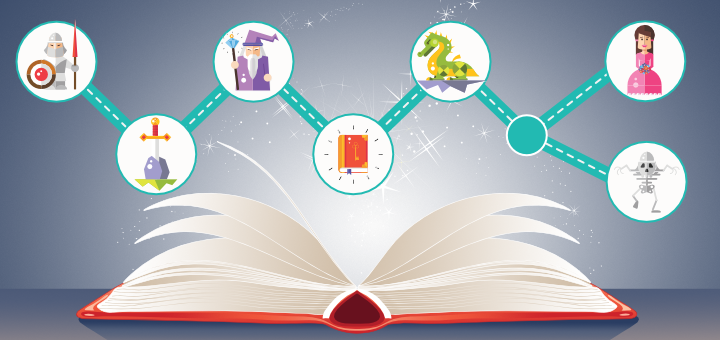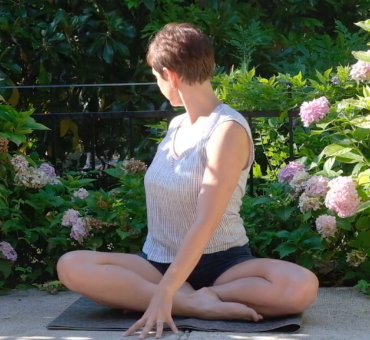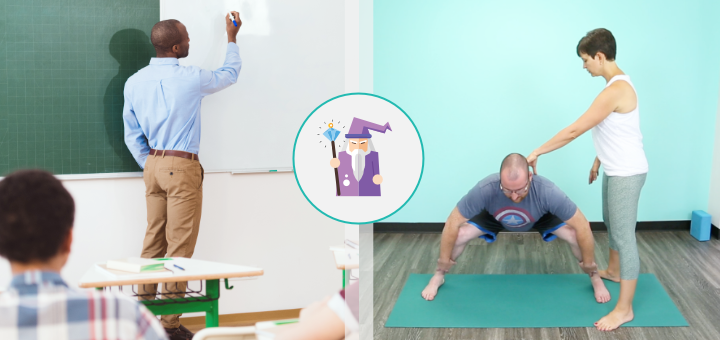What’s at stake for your potential yoga students?

What is your favorite TV show right now? What is at stake for the main character of that show in every episode? What kind of tragic outcome might befall them if they do not succeed in their mission? In any story, the two potential outcomes – an undesirable one and a desirable one – should be obvious. A story without high stakes makes the audience wonder, “Why should I bother watching this?” When the stakes are clearly defined, we want to see our favorite characters through to the successful end to make sure that they get what they strive for.
The same principle is at play when you communicate with your potential yoga students about your services. Why should they care? To make them care, you can paint a strong visual image of how things could go downhill if they do not engage your services and how their life would change for the better if they do. Donald Miller, in his book Building a Story Brand, writes: “The only two motivations a hero has in a story are to escape something bad or experience something good. Such is life. Our desire to avoid pain motivates us to seek a resolution to our problems.”
Many people come to yoga looking to deal with literal pain, so it doesn’t take much to point out to them all the ways that the pain is making their lives unpleasant. But even if they are not dealing with actual pain, we need to be able to show them what might happen if their problem is not addressed soon. In our messaging, we need to be clear about the kind of unfortunate things we help our students avoid.
What are you helping your students avoid? Here are some examples of different types of teacher expertise:
Teacher expertise: Works with lower back pain
Helps students avoid:
- Being bed-ridden for extended periods of time,
- Inability to do active things one wants to do,
- Feeling incapacitated and powerless.
Teacher expertise: Works with sleep issues
Helps students avoid:
- Low energy and foggy mind,
- Susceptibility to disease,
- Feeling disengaged in one’s own life.
Teacher expertise: Works with new moms
Helps students avoid:
- Feeling overextended,
- Being derailed by physical and physiological changes in one’s body,
- Fears of being a bad mother.
Depending on your area of expertise, you can come up with three things you are helping your students avoid and include them in your marketing materials. The trick is not to overdo it with doom and gloom. Donald Miller writes: “You’ll only need a few […] things to warn your customers about to get your point across. Too much and your customers will resist you; too little and they won’t know why your products even matter.”
You would spend much more time describing what a vision of success might look like. Students want to know: Where will you take them? Stew Friedman at the Wharton School describes it as a “compelling image of an achievable future.” What kind of vision of an achievable future can you paint for your students?
According to Donald Miller, there are three main ways most effective stories usually conclude:
- The hero wins some sort of power or position (overcoming external forces and achieving important status);
- The hero is unified with somebody or something that makes them whole (with something external creating a sense of completeness – can manifest as finding a mate or community);
- The hero experiences some sort of self-realization that makes them whole (and helps them reach their potential).
In the field of yoga, every solution to a problem needs to come from within a student. It’s the work they put in and the insights they generate from their own physical, physiological, or mental-emotional transformation that would lead them to a more stable, happy, and peaceful place. We need to show them what that happy place will look like, and we need to be specific. Donald Miller emphasizes that “the resolution must be clearly defined so the audience knows exactly what to hope for.” Tell and show your potential students what their life will look like if they use your services so that they think “I want this.”
Here are some examples of what this aspirational vision might look like:
Teacher expertise: Works with lower back pain
Aspirational vision for students:
- Waking up pain-free, ready to start the day,
- Being able to walk, run, hike, play sports without discomfort,
- Feeling powerful, capable, and strong.
Teacher expertise: Works with sleep issues
Aspirational vision for students:
- Feeling focused and creative,
- Feeling vital and resilient,
- Being present and happily engaged with daily tasks (playing with kids, walking the dog, cooking dinner, etc.).
Teacher expertise: Works with young moms
Aspirational vision for students:
- Integrating self-care into one’s day,
- Coping with a changing body effectively,
- Asking for help when necessary,
- Experiencing joy from baby smiles.
These are the messages and images that you need to feature on your website and other communication channels. Too often, yoga websites consist of beautiful images of bendy yoga teachers in poses that are neither attainable nor aspirational to real students that those teachers work with. Mastering difficult postures can be an aspirational identity for some; the question is, is it for your current and future students? Images of yoga classes communicate a sense of community; is that what your target audience is looking for? You can show your site visitors the process of working with you (For example, normal people doing simple yoga poses at home) or the result of their work with you (For example, smiling people joyfully engaging in daily tasks).
Donald Miller summarizes it this way: “We need to show repeatedly how our product or service can make somebody’s life better. If we don’t tell people where we are taking them, they won’t follow.”

Let Marita Greenidge, the marketing and communications manager at the International Association of Yoga Therapists (IAYT), help you build a strategic marketing plan so that marketing your services stops being complicated and time-consuming and becomes realistic, approachable, and sustainable.
This blog is a part of series Refine Your Story: How to Effectively Communicate with Your Potential Yoga Students
Read Part 1: The secret formula that will grow your yoga business >
Read Part 2: Who are your yoga students and what problems do they face?
Read Part 3: Two main qualities that define a good teacher and attract new students
Read Part 4: How to make it easier for potential yoga students to sign up for your services
Read Part 5: How to motivate students to engage your services
References
1. Building a StoryBrand: Clarify Your Message So Customers Will Listen by Donald Miller








I love this!!!! So many good ideas
Those among us who are not teachers might be left with a rather unpleasant feeling after reading this article, I’m afraid.
‘tell the suckers how miserable they will be if they don’t buy our product. don’t overdo it, or you’ll scare them off and they will buy something else instead. don’t shy away from using all manipulation techniques available. remember, they are not particularly intelligent and react well to simplistic visual stimuli’ – that’s the message in a nutshell, is it not?
Obviously, yoga teachers can’t live on prana (forgive the pun) and have to feed themselves somehow. Besides, the creator of this website is doing more than enough in offering tuns of brilliant content free of charge (for which we are sincerely grateful!). But it is still massively off-putting to have the whole marketing trickery shoved in your face.
I’m sorry to be offering such a negative comment, I love this website and admire its creator but I felt I had to voice my concern nevertheless.
“smiling people joyfully engaging in daily tasks” – really really rings all sorts of unpleasant bells…
Hi Maria, thank you for your honest comment. I am sad to hear that this is the message that you got from this post. I do not view showing people that we understand how back pain can affect every aspect of their life as “telling the suckers how miserable they will be.” I find that oftentimes students are not aware of how their actions are contributing to the issues they experience, and it is our job as teachers and educators to show them what might happen if they continue down that path. If they do not see or understand potential consequences, why would they be motivated to make changes? I agree that fear-mongering is off-putting, so I would never recommend that we engage in that. And as far as “smiling people joyfully engaging in daily tasks”, I am sorry that I wasn’t more clear about context. My point was that any yoga website should be about the student and their needs, not the teacher. And any yoga website should be about the benefit that the student gets from yoga for their daily life, beyond mastering yoga poses. That’s why we would want to show people doing daily tasks without pain. One might speak about it at length, or show it with an image, which is quicker and much more effective. I understand that we are all tired of the constant bombardment of simplistic marketing messages, and this is not what I am talking about here. I am talking about effective communication with those folks who are potentially interested in our services – how would they know what they will get if we don’t show it to them? I also understand that each of us will take what they take from this content, and all I can do is explain where I am coming from. My goal here is (and always has been) to support yoga teachers in their personal and professional yoga journey, and I will continue to do it any way I can. And, like you said, yoga teachers need to be able to support themselves, especially now, and this takes effective communication. Once again, thank you for your comment, and I hope that you have a lovely day!
Dear Olga,
Please forgive me for being so nasty. I posted my comment in haste and (even though I still stand by my sentiment) can see now that the tone is utterly and unforgivably wrong. I wasn’t snarling at you here, but, rather, at Donald Miller but I failed to make it clear. The thing is I abhor the whole “regarding people primarily as consumers” philosophy and find his marketing advices sickening. But it is my problem, not anybody else’s, certainly not yours. Particularly since the website is designed for teachers and I have no business hanging around here offering my opinion. I will be very happy to take the comment down, unless you think it might serve some purpose.
I don’t know what gotten into me. The two months in lockdown have ground my good sense down it seems. Still, it’s a poor excuse and I’m, again, sorry.
Hi Maria,
Thank you for your comment and no apologies necessary. I understand where you are coming from and I am glad that we can have a discussion about it. Marketing is a challenging topic for many yoga teachers, since most of us believe that our work should speak for itself 🙂 But usually it takes time and effort to get to that place.